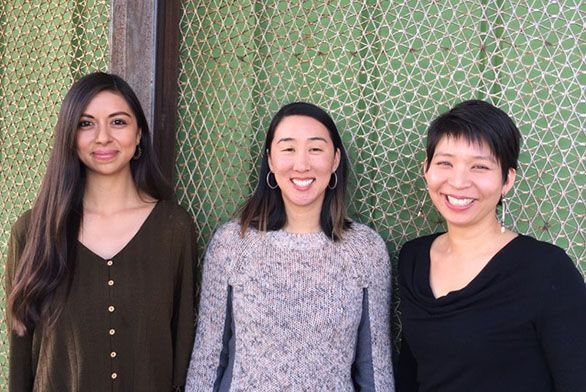Starting Conversations in Santa Fe with PechaKucha
March 8, 2019 | By Eve Tolpa

“I really had no idea what PechaKucha Night was before I started working on it,” says Annette Prapasiri (SF04).
Prapasiri recently joined the local planning committee for the Santa Fe event, which is named for a mode of visual presentation that consists of 20 slides lasting 20 seconds each with a speaker providing commentary. Loosely translated from Japanese as “chit-chat,” PechaKucha is also the name of the international organization supporting nearly 1,000 affiliate cities in hosting presentation events.
According to Prapasiri, Santa Fe’s initial involvement with PechaKucha began back in 2013, but had been dormant until recently. Though the presentation mode was conceived by architects Astrid Klein and Mark Dytham of Klein Dytham architecture, the format is by no means limited to that discipline.
“Part of my role in the committee is to broaden that,” she says.
The Santa Fe event is slated for March 21 and features participants presenting on the theme of “place.” It’s a word that contains multiple meanings and associations, says Prapasiri.
“It could be a verb, it could be a noun. It could be a relationship to a place. It could be about placement—the art of arrangement,” she explains. Regardless of theme, however, the overarching goal of any PechaKucha Night is to “inspire people to share their journey on that particular topic. It’s the starting of a conversation.”
PechaKucha’s strong visual format makes it a great fit for Prapasiri, who has lived in Santa Fe since graduating from St. John’s and is the principal of Six Blooms, a design firm in the city. She is planning to present at the latter of the two other PechaKucha Nights scheduled for 2019. The summer theme is “armor,” and the autumn Night’s theme is “voice and tone,” at which she hopes to share the art of typography, detailing the ways that different fonts within the same typographical family have different personalities and convey different messages.
When she first started out in the design world, Prapasiri says she saw her primary role as being “the army against the ugly.” As time went on, her perspective became more nuanced, focusing on aligning the needs and goals of her clients with those of their audiences. Now, she calls her work “identity design” and describes it as “a door into the house for a business or organization.” It’s a multifaceted process that goes far beyond logos and letterheads, taking into consideration a whole host of sensory factors: “voice and tone of message, visuals, light, color, smell, texture.”
PechaKucha, Prapasiri hopes, will offer the chance to engage in a more open-ended creative process. She is excited, too, for the dialogue sparked by presentations.
As she says, “I love conversation, and that’s why I went to St. John’s.”
Prapasiri was 10 years old when her family immigrated to the United States from Bangkok, and the college was on her radar ever since she was a ninth-grader in Las Cruces, New Mexico.
“I immediately fell in love with the Santa Fe campus. I knew that my heart was at St. John’s,” she recalls. “There was a list of things I didn’t understand about American culture. I needed the impetus of the Program to get the foundation.”
The process of attending, however, took a while. Before enrolling as a freshman, Prapasiri spent time as a Buddhist nun in Thailand, helped her mother open a restaurant back in New Mexico, and studied design in Seattle—training that eventually worked its way into her St. John’s education.
“I wrote my senior paper on Flaubert, Un Coeur Simple (A Simple Heart),” she says. “I addressed the meaning of emblems. It’s very appropriate for a designer to think about the meaning of images.”
PechaKucha represents a similar intersection of Prapasiri’s passions, and she compares the process of preparing a presentation to having a conversation with one’s self.
“It’s like a miniature assignment for people to do in order to solidify their views,” she says. “It’s a different way of looking at conversation.”
PechaKucha Night is March 21, 6 pm, at Second Street Brewery Rufina Taproom, 2920 Rufina Street, Santa Fe. For more information go to pechakucha.com/cities/santa-fe. To learn about becoming a presenter, contact .

